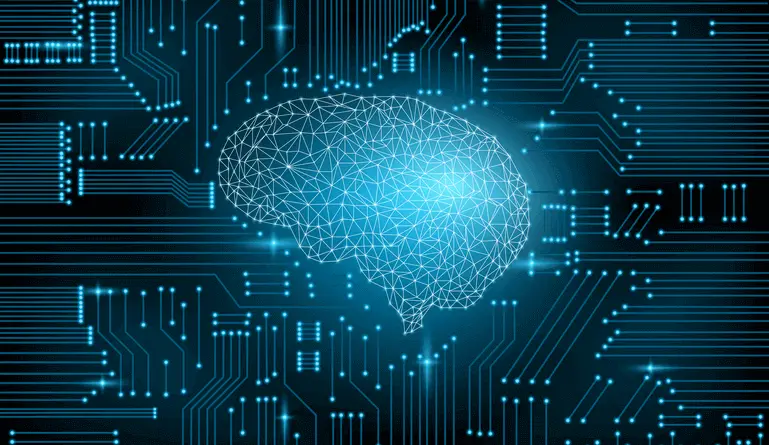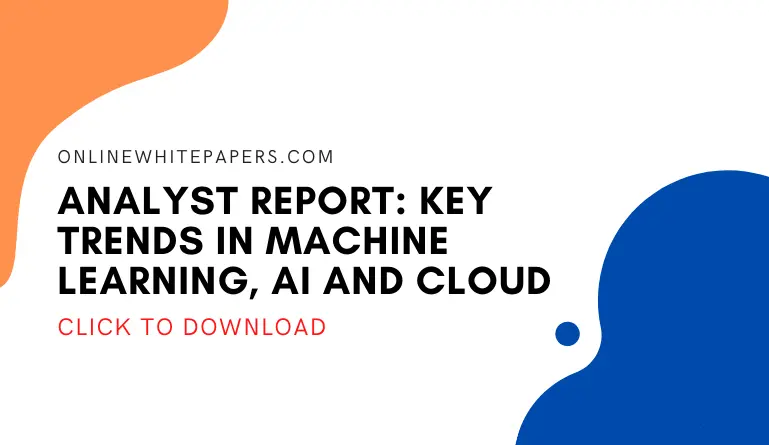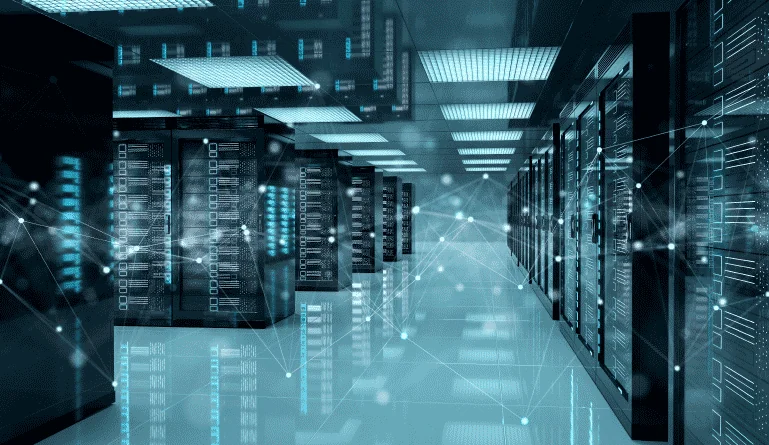Many people are unaware that machine learning, which is actually a form of AI – artificial intelligence, was developed in the 1950s. In 1959, Arthur Samuel developed the initial computer learning program, wherein an IBM computer became better at playing checkers the more played. Jumping decades forward to this modern time, AI is now a cutting-edge innovation that has the potential to create exciting and highly profitable jobs.
There is an increase in the demand for machine learning experts because neither software engineers nor data scientists have the precise skills necessary in the machine learning field. Industries are in need of engineers who are proficient in both fields and can still do the things neither software engineers nor data scientists are capable of. This professional is simply a machine learning engineer.
What is Deep Learning?
Some schools of thought consider deep learning to be an advanced frontier of machine learning, the complex of the complex. It is quite possible that you have already witnessed the outcomes of an intensive deep learning system without even knowing it! Most likely you have watched Netflix, and you have seen its recommendations for movies to enjoy.
In fact, several music streaming services select songs by evaluating the songs you have listened to previously or those you clicked the “like” button for or have given a five-star rating. All of these capabilities are possible because of deep learning. Deep learning is also implemented for Google’s image recognition and voice recognition algorithms.
In the same way, machine learning is regarded as a subdivision of artificial intelligence (AI), deep learning is usually seen as a form of machine learning – may be a subset.
What is Machine Learning?
Machine learning programs computer systems to learn from inputted data without needing continual reprogramming. This means that they continue to enhance their performance on a given task – such as playing a game – without any interference from a human. Today, machine learning is being utilised in a vast range of sectors including healthcare, finance, science, art and so many more.
Furthermore, there are several ways to get machines to learn. From simple methods, like a basic decision tree, to some much more sophisticated methods involving numerous layers of artificial neural networks (ANN). Cheers to the internet, a large number of data has been developed and stored, and such data can be readily provided to computer systems so as enable them “learn” properly.
Two common techniques used today are machine learning with Python and machine learning with R. Although our aim is not to discuss specific programming languages here, it is pretty much beneficial to understand Python or R, particularly if you desire to go more deeply into machine learning with Python and machines learning with R.
Deep Learning vs. Machine Learning
Although the terms “deep learning” and “machine learning” are commonly used interchangeably, it is however necessary that you understand how they differ, particularly if you would be considering a career in Artificial Intelligence. Even though some AI computer systems are not capable of learning on their own, they might still be considered “smart”. Below, we will be diving into the discussion of the ins and outs of deep learning vs machine learning.
-
Human Intervention
In a typical machine learning system, it is necessary for a human to identify and hand-code the specified features depending on the data format (such as orientation, shape, value etc.). Whereas a deep learning system aims to master those features without the addition of any further human intervention. Using a facial recognition program as a case example; the program begins by learning to detect and identify lines and edges of faces, then other prominent features of the faces, and then eventually the general representations of faces.
This process involves an enormous amount of data, and as the program teaches itself over time, the odds of accurate results (that is, correctly recognizing faces) increases. This training occurs via the utilisation of neural networks, not so different from the way the human brain functions, without a human having to recode the program.
-
Hardware
As a result of the quantity of data that is processed, as well as the sophistication of the mathematical calculations that are involved in the applied algorithms, deep learning systems demand highly powerful hardware compared to regular machine learning systems. The graphical processing units (GPUs) is a particular kind of hardware that is employed for deep learning. On the other hand, machine learning programs don’t need so much computing power to operate on lower-end machines.
-
Time
It is no surprise that as a result of the large data sets needed in a deep learning system and considering that there are a lot of parameters and advanced mathematical formulas involved, a deep learning system consumes plenty of time to train. On the other hand, machine learning may take as less time as just a couple of seconds to may be a couple of hours. Deep learning however takes from a couple of hours to a couple of weeks.
-
Approach
Machine learning algorithms usually parse data in bits, these bits are then assembled to develop a solution or result. Deep learning systems consider the entirety of a scenario or problem in a single fell swoop. Take for instance, if you intended for a program to recognize certain objects in an image (the nature of their being and their position or location – such as license plates on vehicles in a car park), machine learning would achieve this via two steps: first, detection of object and then recognition of object.
On the other hand, the deep learning program would require that you input the image, and with assistance, the program would submit both the recognized objects and their position in the image in a single result.
-
Applications
Based on all the above mentioned differences, you would most likely have guessed that deep learning and machine learning systems are employed for varying applications. Where are they used? Simple machine learning applications include email spam detectors, predictive programs (that can be used for predicting costs in the stock market or when and where another hurricane will strike), as well as programs that create evidence-based treatment options for hospital patients.
The application of deep learning, on the other hand, includes facial recognition, music-streaming services, and Netflix. In addition, self-driving cars are another extremely publicized application of deep learning. The programs utilise several layers of neural networks to execute tasks like knowing when to slow down or speed up, recognizing traffic lights, and determining objects to avoid.
-
Supervision
Teaching a machine – whether in the deep learning or machine learning – how to learn involves huge masses of data. In this regard, there are 2 forms of training: supervised and unsupervised.
Of the two types, supervised training is more widely used. Here, a human feeds the machine with sample data that is labeled with accurate answers. It is then up to the machine to learn how to identify patterns and implement the procedures to fresh data input.
Unsupervised learning on the other hand, is not commonly used. However, it allows the opportunity for a machine to find new answers to new questions – ones even we humans are unaware of currently. Unsupervised training entails zero additional input from humans. Hence, deep learning falls under this category.
Therefore, we can also examine the deep learning vs machine learning subject matter in relation to the kind of data they are trained with (or that they learn from).
-
Layers of Algorithms
General machine learning works in a way, different from the specific way of deep learning. Every machine learning system uses an algorithm in parsing data, learning from the data, and in deciding a result. Usually, they utilise linear reasoning by implementing each process to the data sequentially.
Meanwhile, deep learning uses an artificial neural network (ANN) to achieve results. ANN is a computer system which strives to imitate the human brain. Instead of a linear, sequential procedure, the data is filtered via several layers of phases to determine patterns by itself, and without human assistance. As a result, there is a deeper analysis of the particular data – and results that may not be foreseen by humans.
In essence, the machine learning vs deep learning matter is based on how each analyses input. Deep learning utilises several layers of algorithms to find patterns and imitate human cognition. Machine learning however, is more linear, and compares input to sample data.
-
Concepts
Machine learning makes use of simpler concepts such as predictive models. Deep learning on the other hand utilises artificial neural networks programmed to mimic how humans reason and learn. If you recollect back in high school biology; the major computational feature and the main cellular component of the human brain is the neutron. Each neutral connection can be likened to a small computer. The connection of neurons in the brain accounts for processing various types of input: sensory, visual, auditory etc.
In deep learning computer programs, as well as machine learning, they are fed with the input. However, the information is usually in form of massive data sets since deep learning systems require a huge set of data to comprehend it and submit accurate outcomes. Thereafter, the artificial neural networks present a series of binary yes/no questions relating to the data. This involves very advanced mathematical calculations, and classification of data depending on the answers we got.
Trends
Deep learning and machine learning hold almost limitless possibilities in the future! Particularly, the increased utilisation of robots is guaranteed, not only in the manufacturing sector, but also in many other ways that will better our day-to-day lives in both big and small ways. The healthcare sector will probably also experience a transformation, as deep learning systems will assist medical personnel in situations such as predicting or detecting cancer quickly, thereby saving many lives.
In terms of finances, deep learning and machine learning are bound to assist business processes in saving money, making wise investments, and efficiently distributing resources. What’s more is that these 3 areas are just the starting point of future trends for deep learning and machine learning. As of now, several areas that will be enhanced are still merely a spark in the imaginations of developers.
Final Thoughts
In all, we hope this article has given you all the necessary information you need to know about deep learning vs machine learning. Also, you now have an insight into the future trends of deep learning and machine learning. Undoubtedly, it is indeed a very interesting (and of course, lucrative!) time to engage in machine learning engineering. As a matter of fact, PayScale reports that the current salary of a machine learning engineer ranges from between $100,000 to $166,000.
You see now that now is the best time to start studying to work in this field or sharpen your skill set. To be a part of this remarkable and innovative technology, all you have to do is read extensively and participate in the process.







